The 11th century AD, the remote time which nobody has particularly noted and which seems to be deservedly consigned to oblivion in history. What could be so interesting in such a distant past for contemporary humanity? Questionable events or inaccurate chronology? As a matter of fact why would anyone delve into what has vanished long ago? It’s hard to dispute with such arguments, especially today when there is a clear understanding of the value of the here-and-now point in human life. Nonetheless, there is a big BUT about this, and our inquisitive mind armed with the Primordial Knowledge endeavours to stand us in good stead and find interesting elements in historical records which, if linked together, unexpectedly reveal a striking picture for us. So, what are we actually talking about? In our subsequent publications we will tell you about the wave or even a whole tsunami of spiritual renascence that rolled around the planet in a marvellous and incomprehensible way. Although our finds represent just a weak hypothesis so far and we don’t claim them to be anything more significant, this is still a very exciting journey that for many people will hopefully become a pleasant surprise capable of inspiring, reassuring, and strengthening them on the spiritual path.
With your permission, we will start our journey from the Indian tribes of Mesoamerica. Why so? Simply in order to start from something.
***
Available legends and records of the times of Toltec and Maya civilization flourishing in pre-Columbian Central America (contemporary Mexico) clearly indicate the age of Quetzalcoatl reign was the brightest period of cultural development in the region. At that, Quetzalcoatl was a totally real personality who lived in the 10-11th centuries and was later on deified. For the sake of objectivity let me mention we should carefully treat the timeline of those remote times adopted by the official history, since it is known the history itself is written by victors and, as practice suggests, chronicles often contain plenty of inaccuracies and deliberate distortions that are sometimes very far from reality. Therefore, I propose everyone to think rationally. You should agree it’s hard to speak of any precise chronology after a thousand years; furthermore, records of those times were barbarously eradicated by the hidden powerful entity which we permanently refer to in various publications on our website (by the way, we will write about this entity again after the article series is completed).
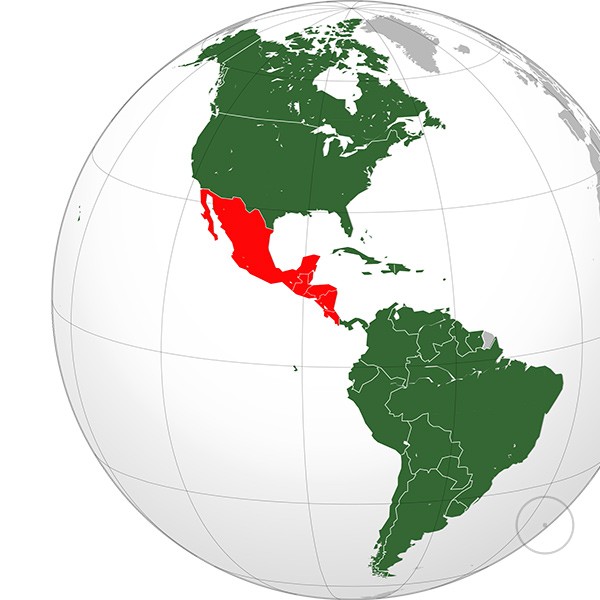
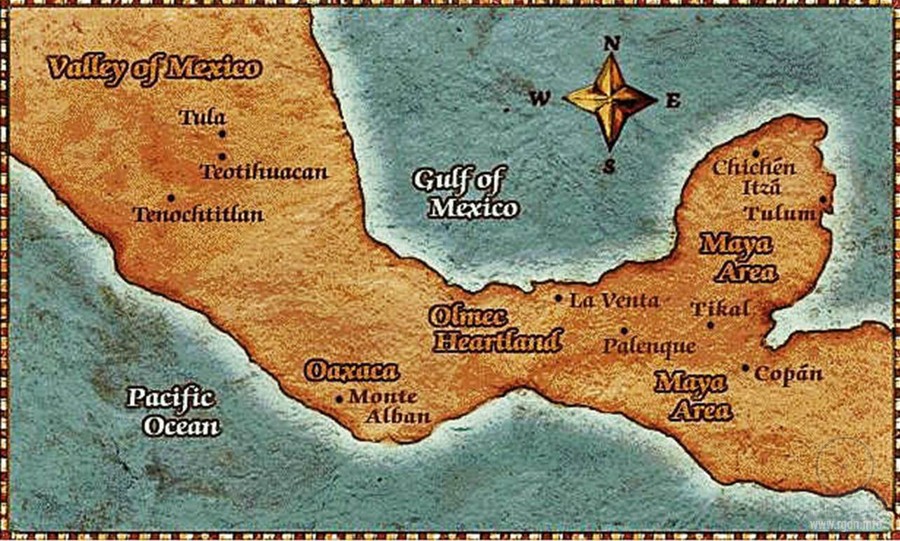
So,
First let’s refer to Wikipedia as usual:
Quetzalcoatl (English pronunciation: [ˌkɛtsɑːlˈkoʊɑːtəl]; Spanish pronunciation: [ketsalˈkoatɬ]) (Classical Nahuatl: Quetzalcohuātl [ket͡saɬˈkowaːt͡ɬ]) forms part of Mesoamerican literature and is a deity whose name comes from the Nahuatl language and means “feathered serpent”. Quetzalcoatl is also the name of a historical personality. The worship of a feathered serpent is first documented in Teotihuacan in the first century BC or first century AD. In the Post-Classic period (900–1519 AD), the worship of the feathered serpent was based in the primary Mexican religious centre of Cholula. It is in this period that the deity is known to have been named "Quetzalcoatl" by his Nahua followers. In the Maya area, he was approximately equivalent to Kukulkan and Gucumatz, names that also roughly translate as "feathered serpent" in different Mayan languages. It is noteworthy that quetzal is a little bird with bright emerald green plumage, highly valued in traditional cultures of America. Quetzal is an ancient symbol of the love of freedom, since this bird does not live in captivity. Let’s note this point, for below we will talk about another character associated with a bird.
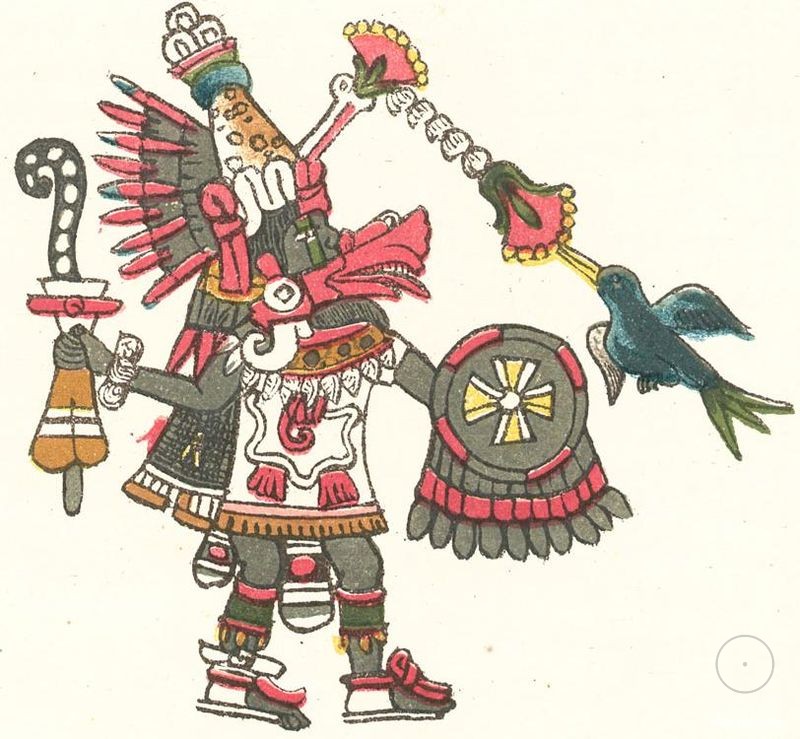
Let’s read further:
“In the era following the 16th-century Spanish conquest of the Aztec Empire, a number of sources were written that conflate Quetzalcoatl with Ce Acatl Topiltzin QuetzalCoatl ([sɛː ɑːkatɫ toˈpilt͡sin ketsalˈkoatɬ] – Our Prince One-Reed Feathered Serpent), a ruler of the mythico-historic city of Tula/Tollan. Legends say Quetzalcoatl ruled in Tollan for over twenty years. The great ruler taught his people mathematics, medicine, astronomy, writing, jewellery making, and weaving. He is believed to have invented a chocolate drink, to have introduced a 52-year-cycle calendar and the canons of music and dance.”
Here we should mention that historians get misled in their guesses and have no clear idea of the exact years of those events, but the 10-11th centuries are already a good reference period for us.
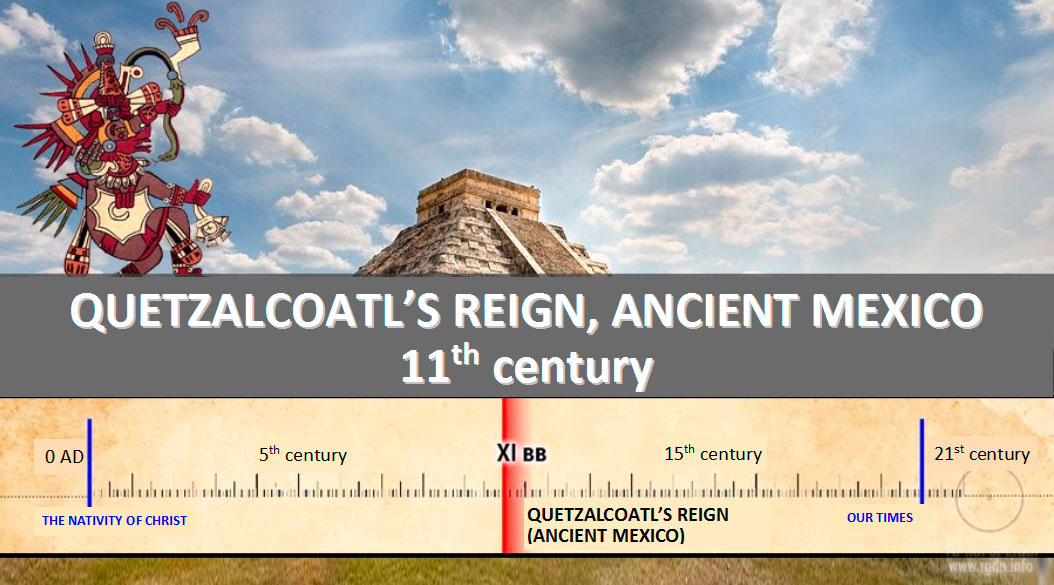
We have also discovered on the web that “Quetzalcoatl was depicted as a bearded man in a mask, with enormous lips, or as a serpent covered with feathers.” There are also the following records: “On the banks of Panuco River (Central Mexico) white bearded men in long garments appeared. Local inhabitants greeted the friendly newcomers well. The bearded men reached Tula/Tollan where they settled together with their leader Quetzalcoatl. He was a tall white man with a wide forehead, big eyes and long black hair. He was clever, just and polite. Quetzalcoatl taught people to treat metals and land; he persuaded them to adopt a new religion, advocated love of neighbours, and called to repentance and good deeds. Most of the Toltec people were inspired by this leader and respected him. Quetzalcoatl became popular and lived in Tollan for several years.” (As we can see, there are obvious time mismatches.) The cult of Quetzalcoatl initially resisted human sacrifices and included sacrifice of butterflies and hummingbirds. According to another source, Quetzalcoatl “forbade human sacrifice and advocated peace”. Finally, as the 16th century chronicler Bernardino de Sahagún wrote, “Quetzalcoatl was a great civilizer who arrived to Mexico at the head of a group of foreigners. He brought arts to the country and particularly encouraged agriculture. In his time corncobs were so big that a man could not carry more than one, whereas cotton grew in different colours, so it was unnecessary to paint it. He built beautiful roomy houses and preached religion that promoted peace.”
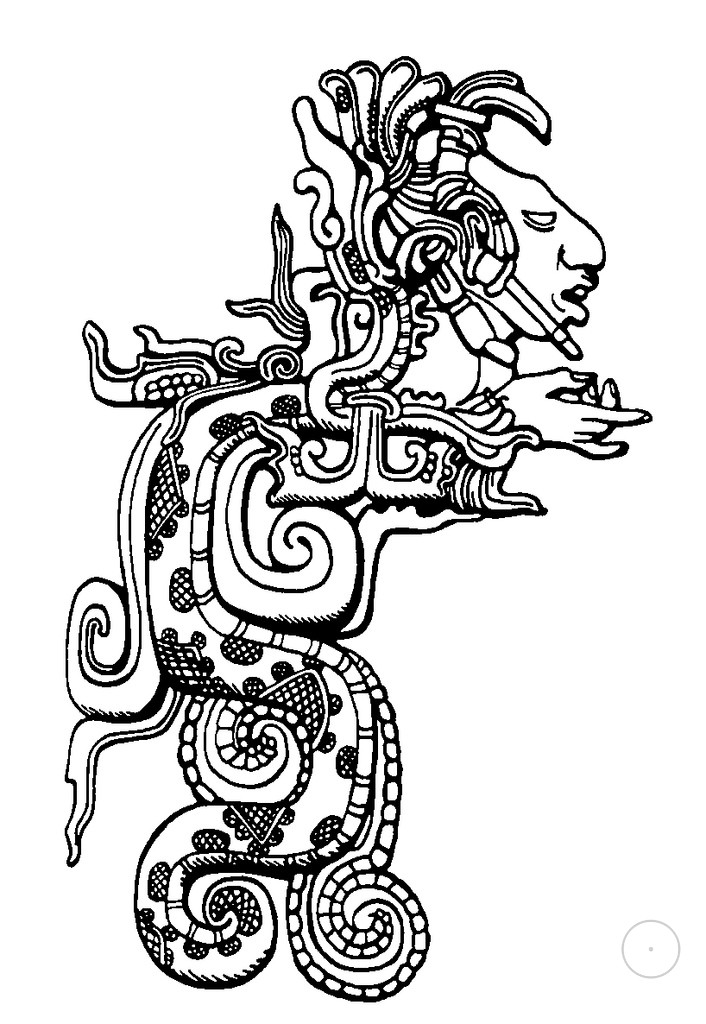
Quetzalcoatl, Kukulkan, the Feathered Serpent...
The main opponent of the Feathered Serpent in Toltec beliefs was Tezcatlipoca, a malevolent god whose name meant “the smoking / fiery mirror“. In late Maya and Aztec mythology he was one of the main deities along with Quetzalcoatl / Kukulkan. He carried a mirror or shield by means of which he observed human deeds on earth. In various incarnations he was either the creator-god or the destroyer of the world. Tezcatlipoca supposedly banished Quetzalcoatl, though in another version Quetzalcoatl voluntarily sailed away on a raft of serpents, having promised to return. Hence, as we see, the story is full of riddles.
Let’s keep in mind the “liaison” between Quetzalcoatl and Tezcatlipoca, for we will certainly come back to it in our subsequent materials.
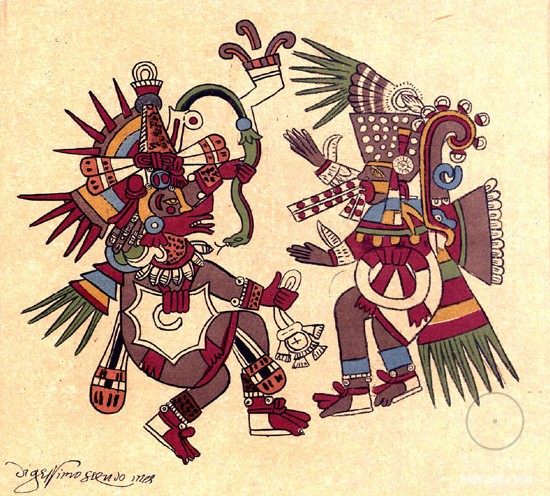
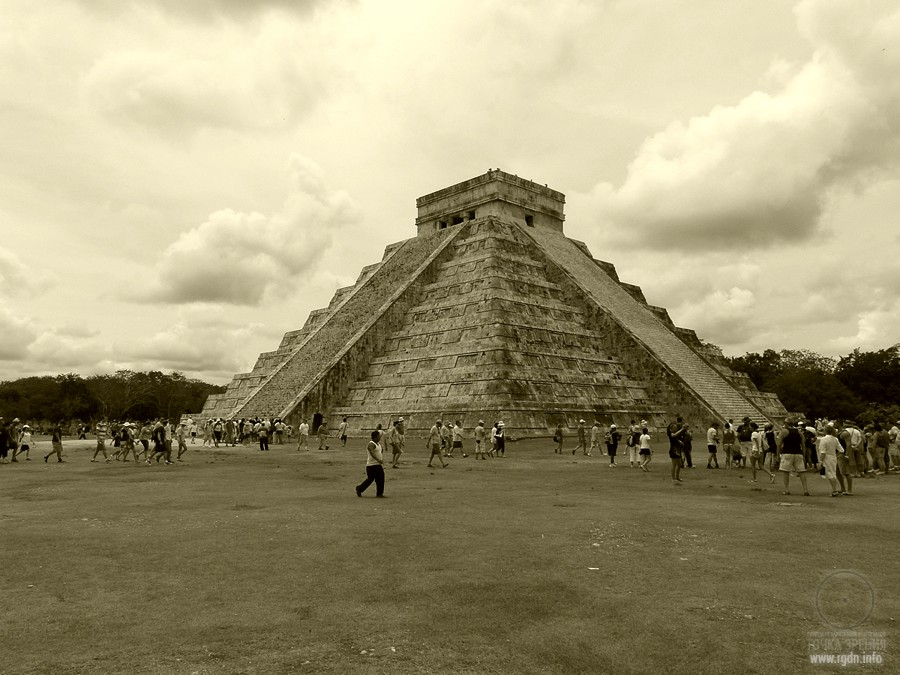
The main temple of the ancient city of Chichen Itza was dedicated to Kukulkan (see photo above), the Toltec patron. Let’s mention again that the Toltecs revered Kukulkan as God. In their tradition he’s also called the bearded white god. Since he had a Caucasian appearance, the Indians treated Spanish conquistadors openly and trustfully. When they came, the Indians thought it was Quetzalcoatl / Kukulkan with his companions. Most interestingly, in Chichen Itza there is also a temple the official name of which is the Temple of the Bearded Man (see photo below).
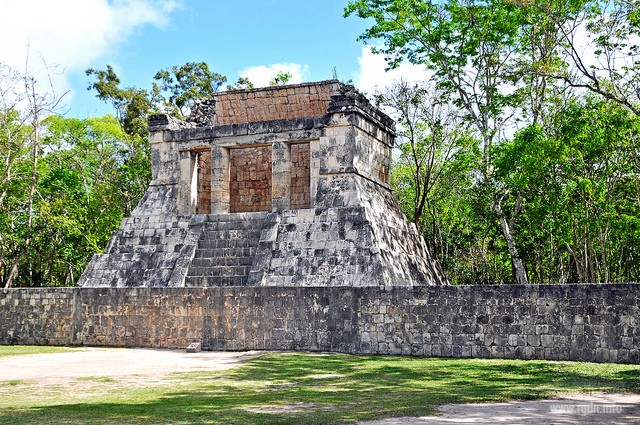
Temple of the Bearded Man in the ancient city of Chichen Itza, Mexico
Here it would be appropriate to cite the book The Forbidden History, or Columbus Did Not Discover Americaby Andrey Zhukov & Nikolai Nepomniaschy:
It is known that one of the distinctive morphological features of the indigenous population of America is poor hair growth (beard and moustache) on male faces. Only in some tribes of the northwest coast of the USA and Canada, e.g. Haida and Tlingits, men had sparse moustache and sometimes a little beard. As an exception, reduced moustaches and beards were worn by representatives of various tribes in the east of the USA – Delaware, Chippewa, and several others. Beards were also recorded in some tribes that inhabited the southern extreme end of the New World (e.g. Bakairi). All the rest of Mesoamerican and South American peoples, despite the political character (diverse types) of the Americanoid race, lacked such feature. In the Olmec culture there are many figurines depicting bearded men with appearances not typical for America. Unfortunately, all such items were not discovered in scientific excavations, but are accidental finds. Thus it’s impossible to date them precisely.
Generally speaking, we can only state for sure that the bearded teacher (or teachers) were newcomers, and we will hardly find any accurate information today as to specific years when they were introducing culture among the Indians. Hence, let’s just record the 10-11th centuries as a reference period and move further. After all, our goal is not to find the ultimate truth, but rather to put markers on the geographical and chronological maps that would comply with our hypothesis.
The brilliant design of the Temple of Kukulkan can convincingly tell whether the Toltecs in their times possessed relevant spiritual knowledge. We wrote about this pyramidal structure in the articles Softening of Evil Hearts and Kukulkan, so there is no sense to repeat the information in detail. Generally speaking, the temple was built in such a way that annually, on the vernal and autumnal equinox days, the shadow of the stepped edges of the pyramid (7 steps indicating 7 dimensions) fall on the balustrade, creating an impression that a huge serpent is crawling down the pyramid. Beyond all doubt, the Maya Indians believed it was Kukulkan himself who thus descended to the earth. The pyramid steps symbolized the Chinvat Bridge as the way to the spiritual world. Taking into account the sacred math and geometry by which this unique structure was built, we can assume the pyramid is as if a divine trace left on our planet by a highly spiritual being who is usually called a Teacher or Bodhisattva.
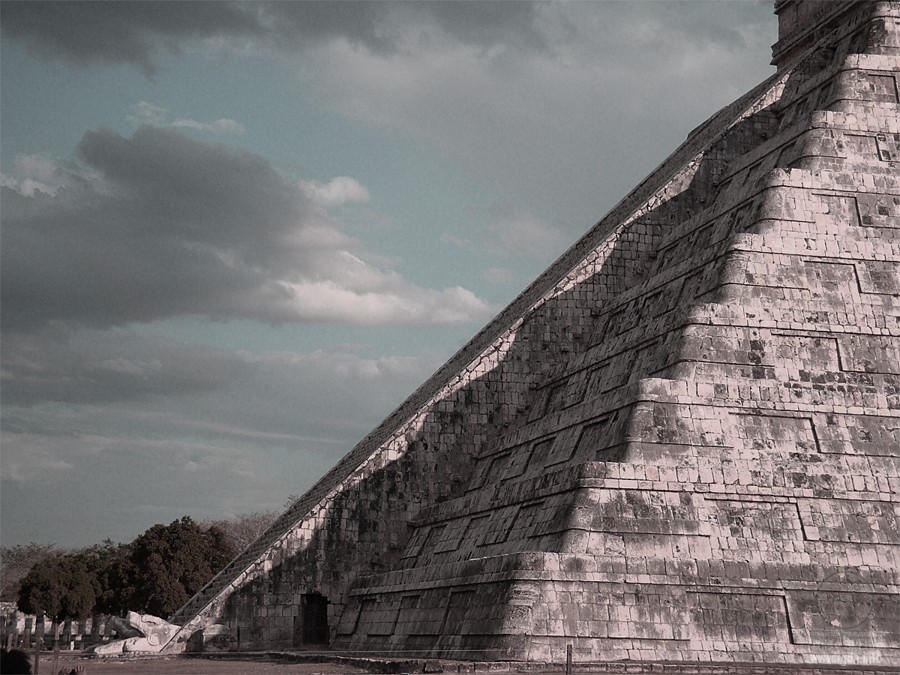
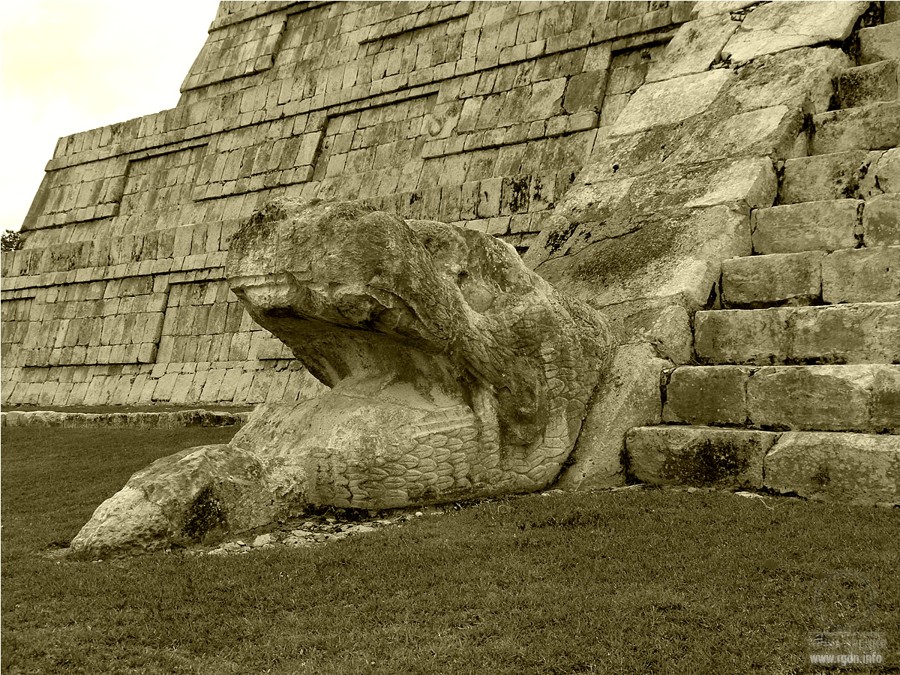
It is located at Teotihuacan and represents a six-tier pyramid decorated with serpent heads. Little information is available on the temple, so it is a total riddle both for historians and numerous tourists who come here.

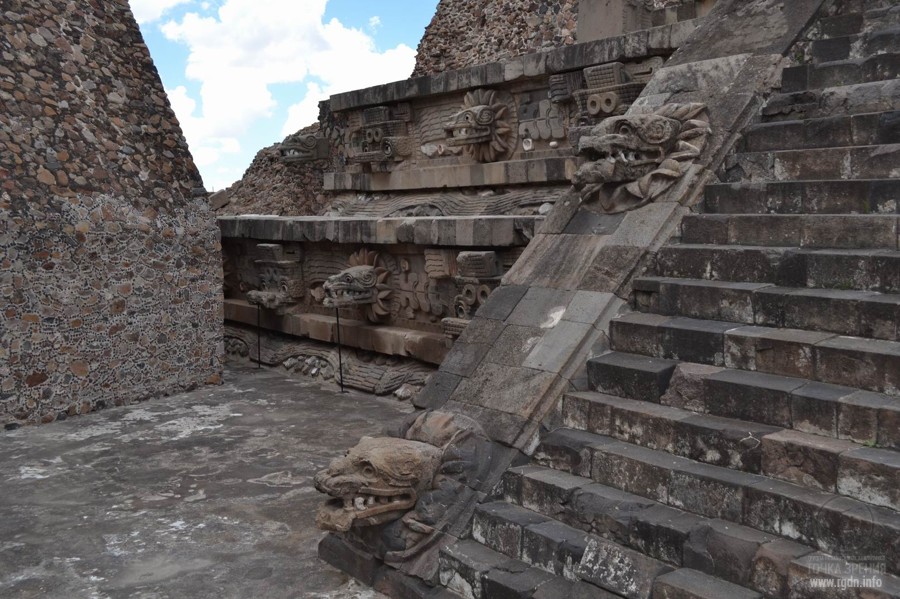
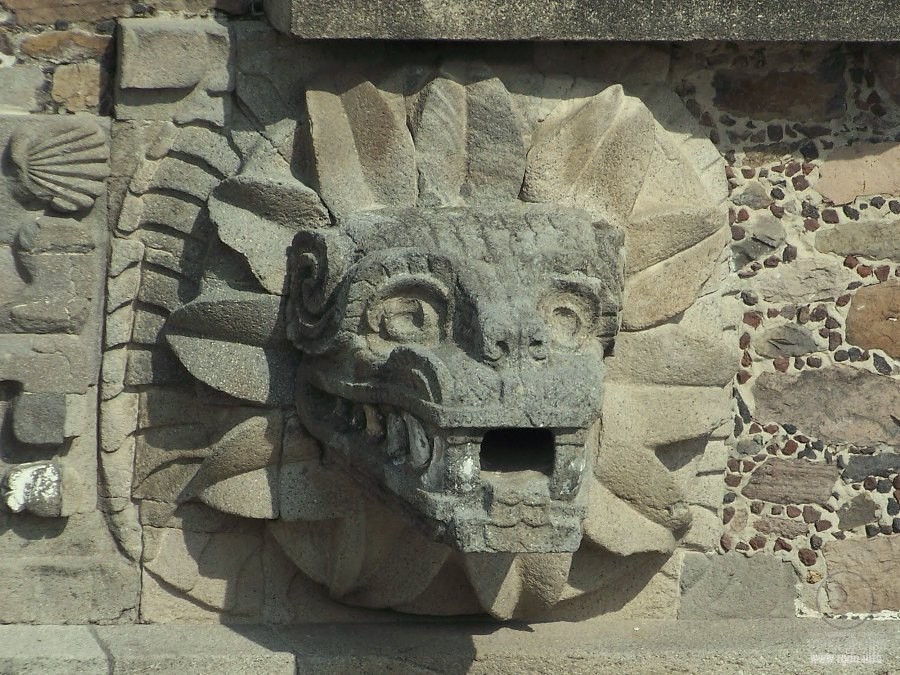
At that, in the left upper corner of the above photo we can see a seashell and start fishing for relevant information. Consequently we encounter Graham Hancock’s puzzled observations in his Fingerprints of the Gods:
I walked towards the northern end of the Street of the Dead… Indeed, the more I thought about it the more it seemed that water had been the dominant motif at Teotihuacan. Though I had hardly registered it that morning, the Temple of Quetzalcoatl had been decorated not only with effigies of the Plumed Serpent, but with unmistakable aquatic symbolism, notably an undulating design suggestive of waves and large numbers of beautiful carvings of seashells.
Let’s address ourselves to the source of Primordial Knowledge – the AllatRa book:
... water, as we know, symbolised the other, spiritual world in the interpretation of the ancients... (page 391 – allatra.us)
Anastasia: ... You have mentioned that ancient people had a sign in the form of a wave.
Rigden: Yes, wave is an ancient designation of energy and its characteristics, or, as they would say today, of the energy field. If this referred to the spiritual, sacred knowledge about the human being, then the number of wavy lines or wavy stripes indicated the energies of the dimension with which a person was working in spiritual practice, or which dimension one makes a transition in it, or simply symbolised activities in the invisible world. A wavy line in everyday symbolism was used as a designation of water or rivers, while in the sacred knowledge about the Universe water was a symbol of the other world, which was different from the earthly world, therefore connection with the spiritual world was often designated in such way.
Let’s look closer at these waves. Indeed, we can discern either 6 or 7 wavy lines that imply dimensions:
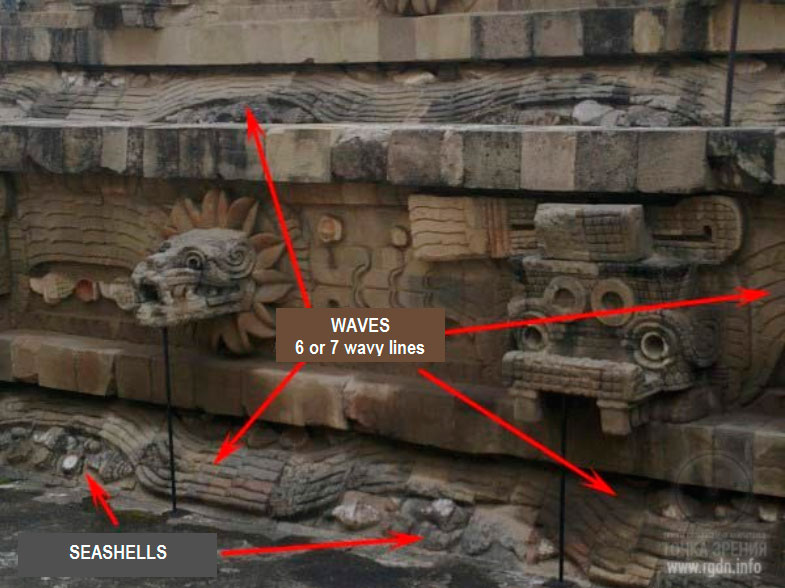
As for the hollow seashells, there are the following lines in the PRIMORDIAL ALLATRA PHYSICS report:
One can find mentions of the Great Void (unfortunately translated by modern translators as “unordered chaos”) for example, in ancient Egyptian, Japanese, Chinese, Polynesian myths of the creation of the world. This information may also be found in Scandinavian, American (pre-Columbian) and other myths of nations of the world. In many ancient manuscripts there are mentions of such concept as Zero (Nought)… Nought was explained as an absolute mystery, the inapprehensible Absolute, the “initial mover”, the sum of all possibilities, “nothing”, the state of absence of all the material: size, effect, mass, volume, etc… For example, in Mesoamerica the people of the Mayan civilization more often drew zero as a hollow seashell (although there are also 25 more hieroglyphs that denote the concept of zero, one of which is two spirals similar to the Russian letter З (or the number 3)). The Maya called zero “tulakal”, whereas the Aztecs called it “sintli” (all).
Furthermore, let’s look closer at the elements of the Indian ornament. A knowledgeable person can easily decipher these elements: there are right-side twists, a swastika, a pyramid, indications of the Lateral Animal Aspects, hints at the four Aspects in the human energy structure, and symbolic AllatRa signs. Or does it only seem to me so?
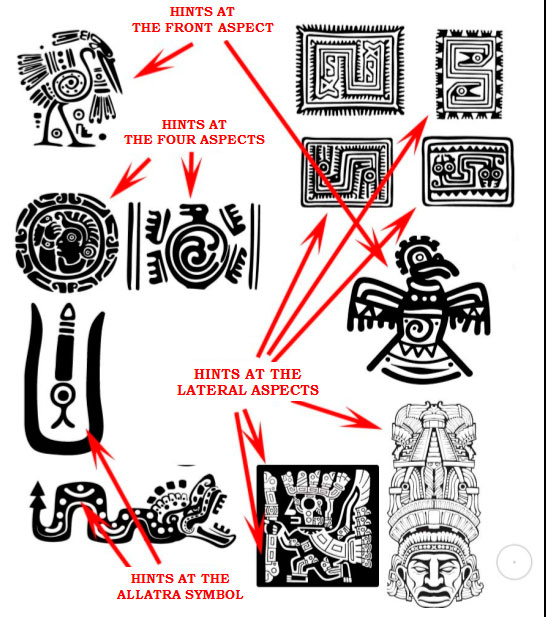
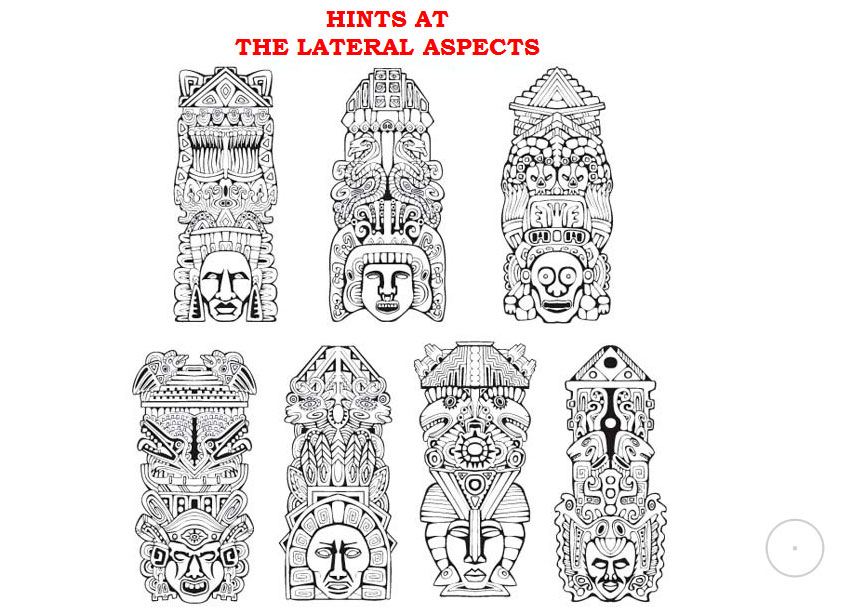
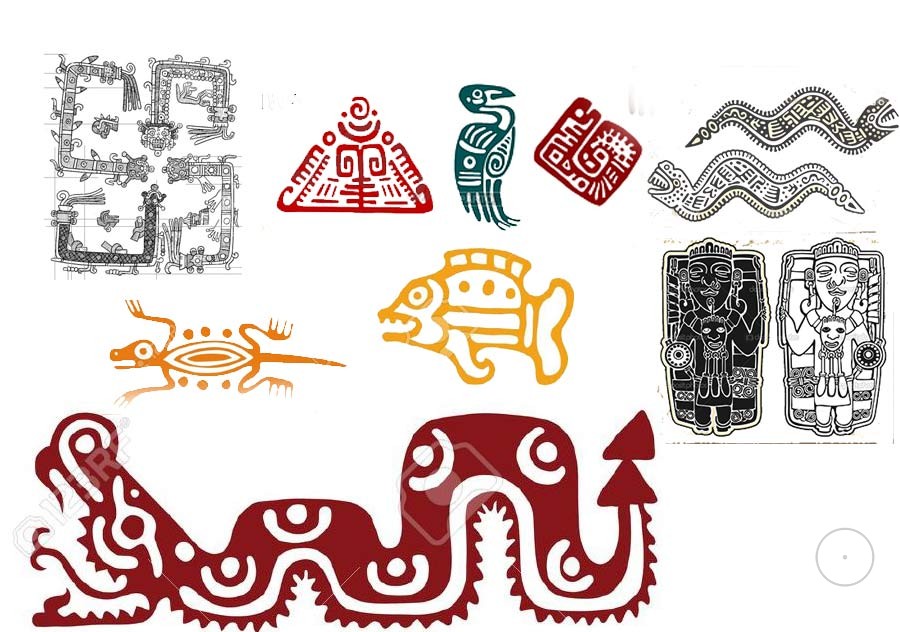
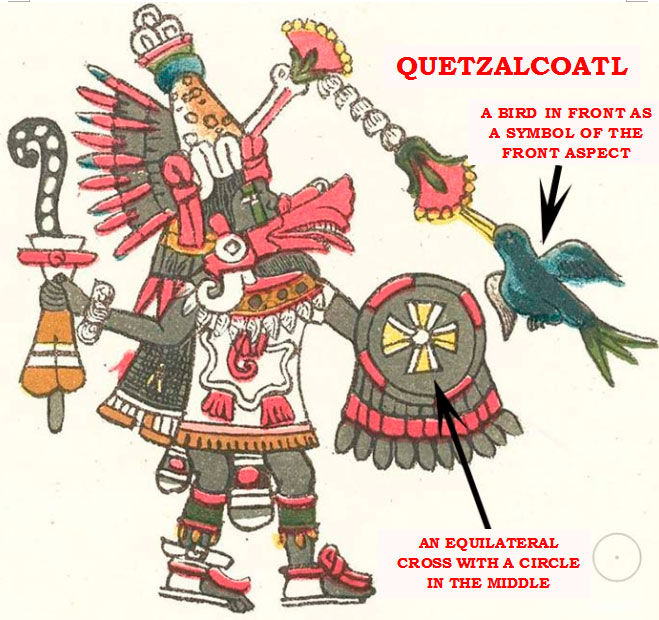
Here is one of the most popular images of Quetzalcoatl available on the internet. Please, compare the equilateral cross on his (“shield”?) with Christian crosses of the 11-13th centuries in Kievan Rus (see on page 544 of the AllatRa book – allatra.us). A question arises why crosses are among the traditional Toltec symbols? In the Fingerprints of the Gods Graham Hancock tells about the two types of equilateral crosses he discovered during his journey:
... although the Pyramid of the Magician had been built long centuries before the Conquest, the symbol most frequently featured in these mosaics was a close approximation of the Christian cross. Indeed there were two distinct kinds of “Christian” crosses: one the wide-pawed croix-patte favoured by the Knights Templar and other crusading orders in the 12th and 13th centuries; the other the x-shaped Saint Andrew’s cross.
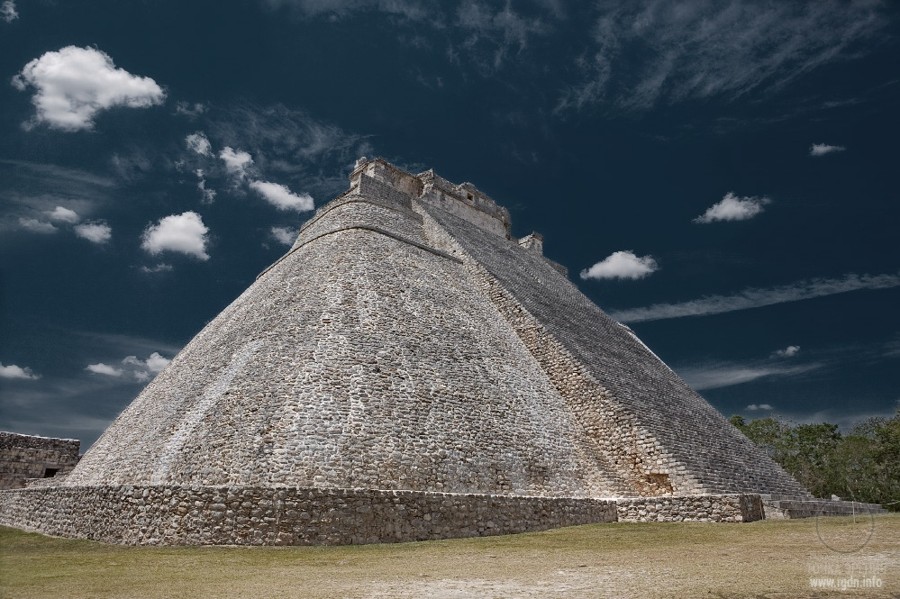
Pyramid of the Magician, Mexico
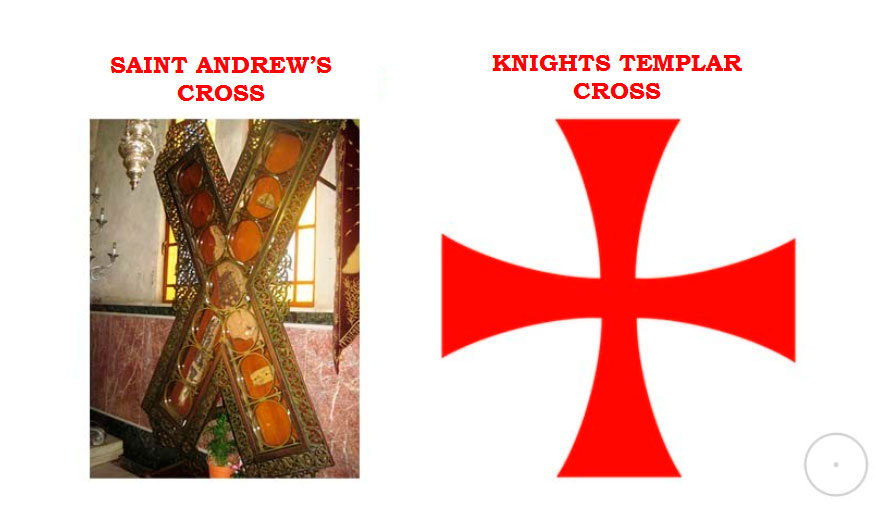
Now it is logical to present explicative quotes from the AllatRa book regarding the crosses:
Rigden: ... A four-pointed equilateral cross with a circle inside it (the four main Aspects and the Soul) indicated major elements in the human structure, which embodied the main plan: creation of conditions for the Personality’s choice between the material and the spiritual worlds.
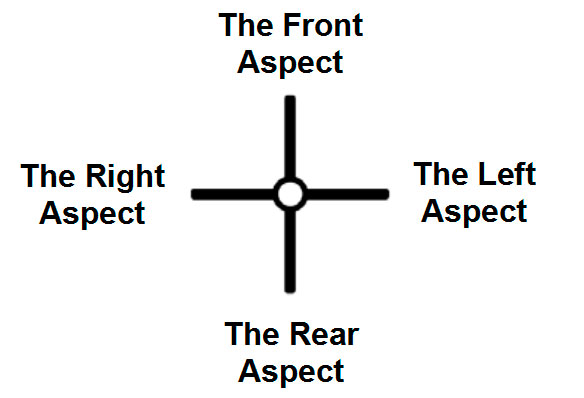
The symbol of a human being: an equilateral cross with a circle
(allatra.us – page 335)
........
Rigden: I have already said this many times, and I shall repeat now: only people themselves can change the situation; everything depends on the dominant choice of each person. But let us get back to the topic of the signs of the four Aspects. If an equilateral cross was a symbol of a common person, then a diagonal cross (a turned cross) and its variations (often with a circle in the centre) referred to the Personality that is moving along the path of the Knowledge and is aware of the sacred information about the human being and the meditative practices on the four Aspects. I emphasise, it’s the person who has the Knowledge, but the way he or she uses it (with which dominant in consciousness) is up to his or her personal choice.
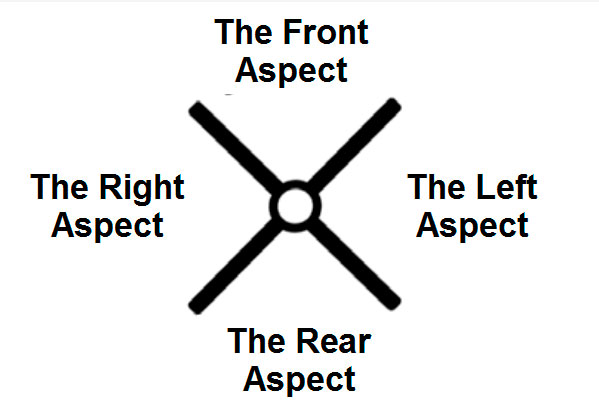
An equilateral cross with a circle in the centre as a symbol of
the Knowledge about the four human Aspects and the Soul
A diagonal cross is a symbol of progress in learning and a conditional division of space into the fields (zones) of influence of the Aspects, whereas the circle is a designation of the Soul. The interpretation of the symbol pattern is shown “seal-like”.
But most often the diagonal cross symbol (or its variations) in sacred texts pointed at the Knowledge about the human energy structure, the Aspects, and the interconnection of dimensions...
... Variations of the diagonal cross were quite diverse: a diagonal cross in the form of four joined triangles with a circle in the centre, circles-centres of triangular spaces, clover crosses (narrow in the centre and expanding to the edges), snakes entwined in the form of a cross, and so on.








Diagonal cross variations with markings of the spaces of the four Aspects
(allatra.us – pages 348-350)
The AllatRa book (allatra.us – page 541) also contains the following lines:
... But thanks to the timely interference of Agapit of Pechersk in this process, exactly positive symbols were activated in Kievan Rus, many of which (the AllatRa and Allat signs, rhombuses, circles, equilateral crosses) were well-known in the pre-Christian period, too…
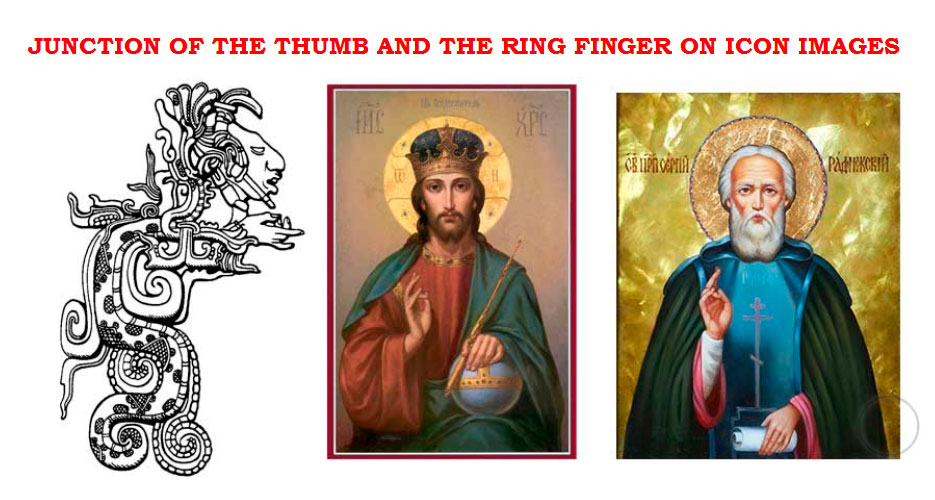
There is another unexpected element that surprised me: Quetzalcoatl / Kukulkan is often depicted with his thumb and ring finger joined together, and similar symbolic gestures we find in Christianity, namely on some Orthodox icons. Better than elsewhere such gesture is described in the AllatRa book:
Anastasia: Most people do not even think why there are different traditions which they follow and from where the root of such traditions grows. But when you understand such details, other information also becomes clearer, e.g. what the junction of this finger with another one means in sculptures or images of deities, including as a symbolic indication of meditative techniques.
Rigden: As for the position of the fingers… While the ring finger, according to meditative functions, symbolized spiritual vision, knowledge, and superpowers, the thumb symbolized the energy potential of a person oneself. In particular, the thumb indicated that a meditation involved the chakran located approximately in the lower abdomen, inside the pelvic girdle, between the tailbone and the pubic symphysis. Externally, on the schemes of a human being for convenience it was depicted in the perineum area. But this is only for convenience, because we are talking about the human energy body, not the physical one.
By the way, in India this chakran is called Muladhara (mūlādhāra is a word derived from Sanskrit, where in the English transcription ‘mula’ means a ‘root’ or ’base’, whereas ‘adhara’ means a ‘foundation’, ‘basis’, or ‘support’). The chakran is also associated with awakening of the human energy potential. It was traditionally marked in red colour.
In the East, the awakening of this powerful energy potential is called “the awakening of the sleeping Kundalini Serpent coiled three and a half turns.” I already mentioned this energy more than once while telling about the helical (spiral) structures. Since ancient times, this power has been considered the feminine aspect of the divine power (Allat), and some of its properties later began to be attributed to the Holy Spirit in Christianity. It helped awaken a powerful, generative force of spiritual Love in a person, which does not come even close to any physical sensations or manifestations of coarse energies…
(allatra.us – pages 594-595)
Commentaries on the article Softening of Evil Hearts contain an indication that Quetzalcoatl’s antipode – Tezcatlipoca – or rather his symbolic images are also very interesting to see and “read”, if one certainly possesses the Primordial Knowledge. Let me cite a relevant commentary in full:
Tezcatlipoca is Ariman, the creator of the material world, the devil, the animal mind. Let me give quotes from various sources about him. “Tezcatlipoca, the deity of the night sky, the Smoking Mirror, was the first one to turn into the Sun. That was how the first age started. This deity lacks one foot. When the world was created, Tezcatlipoca and Quetzalcoatl decided to seize the world monster, the giant crocodile Cipactli, and they had to beckon her. Tezcatlipoca sacrificed his foot. They beckoned Cipactli, caught her, and turned her into the earth.” “As the sovereign of the world and natural powers, Tezcatlipoca was the opponent of spiritual Quetzalcoatl and sometimes played the role of the tempter of people.”
Now, let’s cite the AllatRa book: “Still other episodes mention the division of the world into two elements or two deities with directly opposite functions, the creation of an invisible pair. The spirals themselves are represented in myths as, for example, the first pair of gods with the opposite functions (one having the divine essence and the other one having a demonic essence).”
Tezcatlipoca is described via very interesting epithets: “the disseminator of discord”, “the enemy”, “the capricious sovereign”, and has such hypostases as Titlacahuan – “He whose slaves we are” (I’ve definitely heard it somewhere), Moyocoyani – “the Creator of Himself”.
His images often contain the structure of a septon. (Who could actually tell Indians about this? Probably, somebody very Good and Kind.) The images may be seen below.
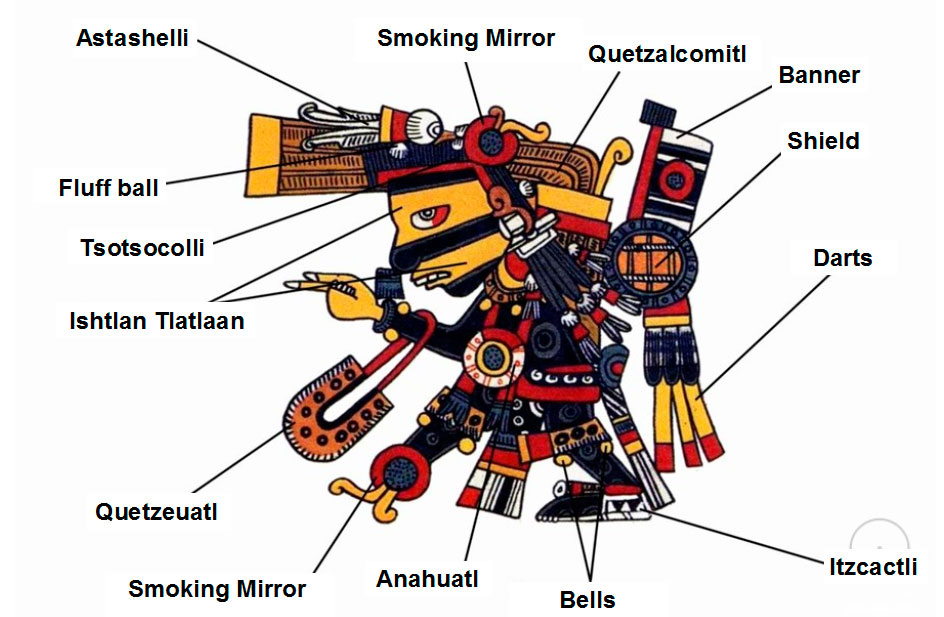
Quite interestingly, he has not one smoking mirror, but two, clearly visible on the above image. On Tezcatlipoca’s stump there is the smoking mirror itself, while the second mirror is fastened to the deity’s occiput. This is either a simplified depiction of the structure of s septon or, since we speak of the two-dimensionality and planar imaging, there are two “antipode reflections” instead of six. I searched for the inclusion of the power of Allat in this image and found it, too – it’s Anahuatl. Another distinctive feature of Tezcatlipoca is the leather ring (the symbol of eternity).
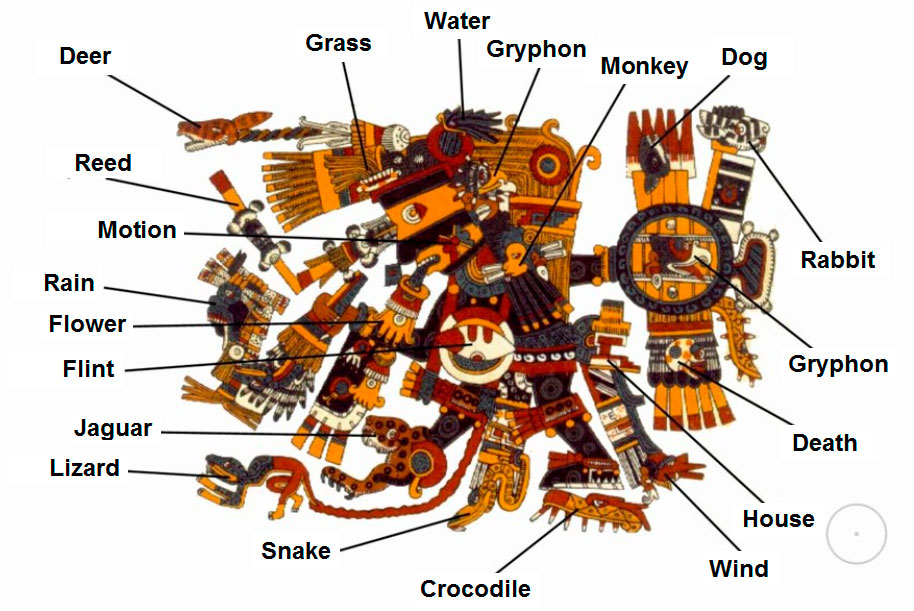
The next image depicts the Flint in the Anahuatl ring. At that, a flint lights fire – “the candle of the living fire”. Anahuatl is between the mirrors, just like the inclusion of the power of Allat is amidst 6 anti-Allats according to the Primordial AllatRa Physics.
There is also a unique extant rarity – the huge (of two man heights) stone Sun disc, or the famous Maya calendar, owing to which it is possible to calculate 21 December 2012 divulged by contemporary interpreters as the date of the end of the world. A question arises where the Indians took such phenomenal astrological knowledge from. Was it Quetzalcoatl himself who left such a chronological reference item for us to mark some crucial event that was to take place several centuries after?
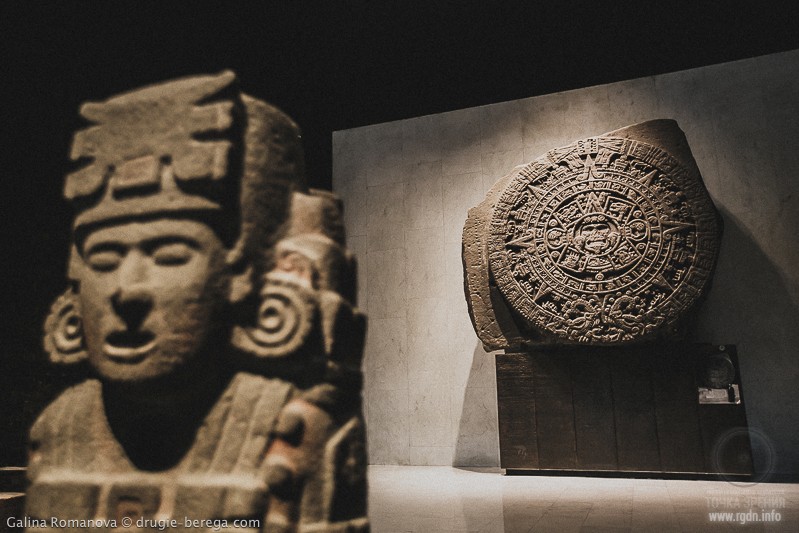
Below, there is another interesting figure – Huehueteotl, whose name is translated as the “Old God”, the deity of fire. In the ornament of his “hat” we again see an equilateral cross with a circle in the centre, while his posture is definitely the pose of a man who meditates or performs a spiritual practice.

Moreover, below we can see the most interesting face against the background of a stone Sun disc. There are AllatRa and Allat signs carved on the face, and on his hat we can discern recurrent seashells with little right-side twists. We have already talked about seashells herein, but let us add that the article The Way of St. James. Santiago de Compostela – the Spanish Mecca contains a mention that the shell (seashell) symbol is also associated with Virgin Mary.
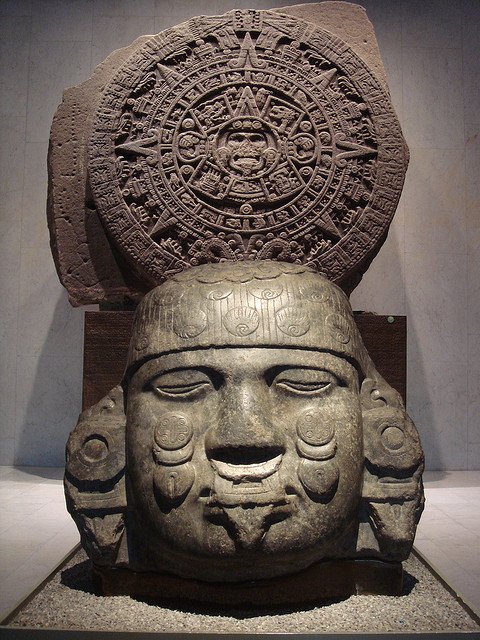
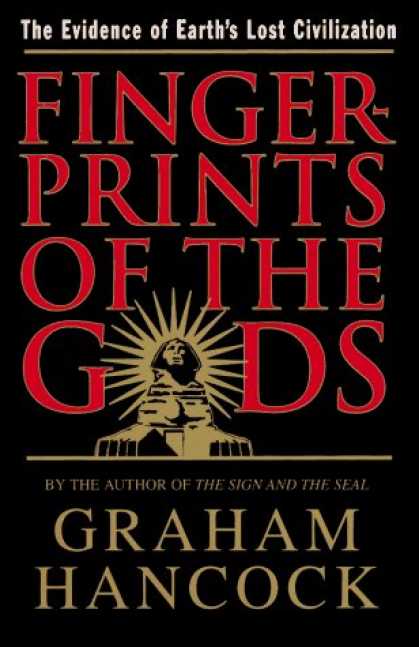 Perhaps, the most interesting, impressive and extensive description of the Feathered Serpent story is the one shared by Graham Hancock. His book Fingerprints of the Gods is full of priceless information about the bearded white-skinned deity named Quetzalcoatl. Below I shall cite a whole bunch of extracts from this book which are quite long yet necessary for the general analysis of the role and tasks of the enlighteners of humanity.
Perhaps, the most interesting, impressive and extensive description of the Feathered Serpent story is the one shared by Graham Hancock. His book Fingerprints of the Gods is full of priceless information about the bearded white-skinned deity named Quetzalcoatl. Below I shall cite a whole bunch of extracts from this book which are quite long yet necessary for the general analysis of the role and tasks of the enlighteners of humanity.
LIGHTBRINGER
“ ... Meanwhile, however, I was keen to pursue another, related line of inquiry. This concerned the bearded white-skinned deity named Quetzalcoatl, who was believed to have sailed to Mexico from across the seas in remote antiquity. Quetzalcoatl was credited with the invention of the advanced mathematical and calendrical formulae that the Maya were later to use to calculate the date of doomsday. He also bore a striking resemblance to Viracocha, the pale god of the Andes, who came to Tiahuanaco “in the time of darkness” bearing the gifts of light and civilization.”
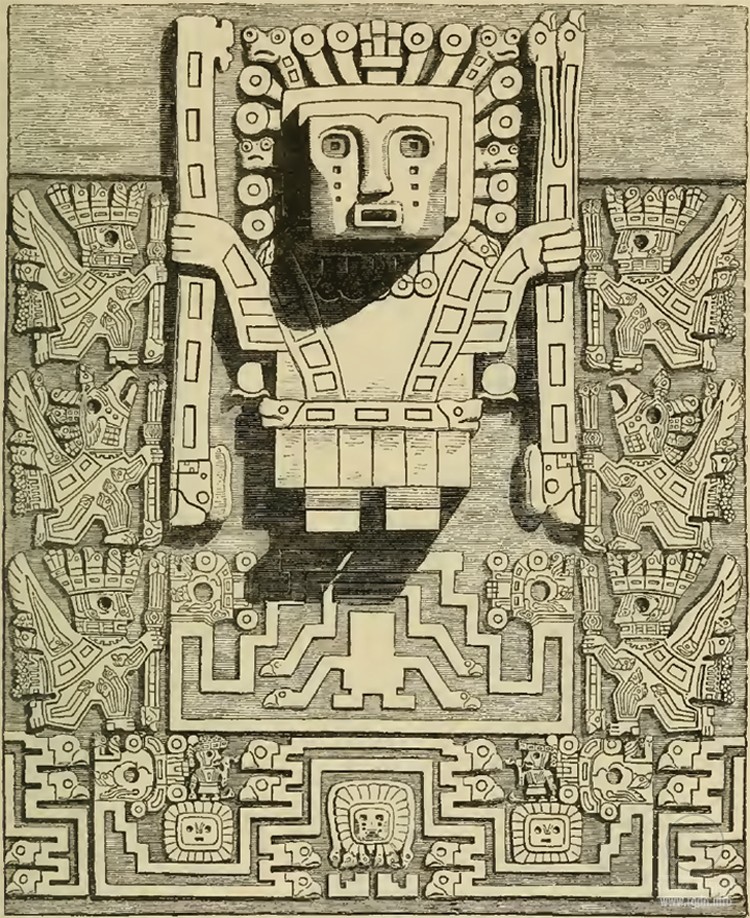
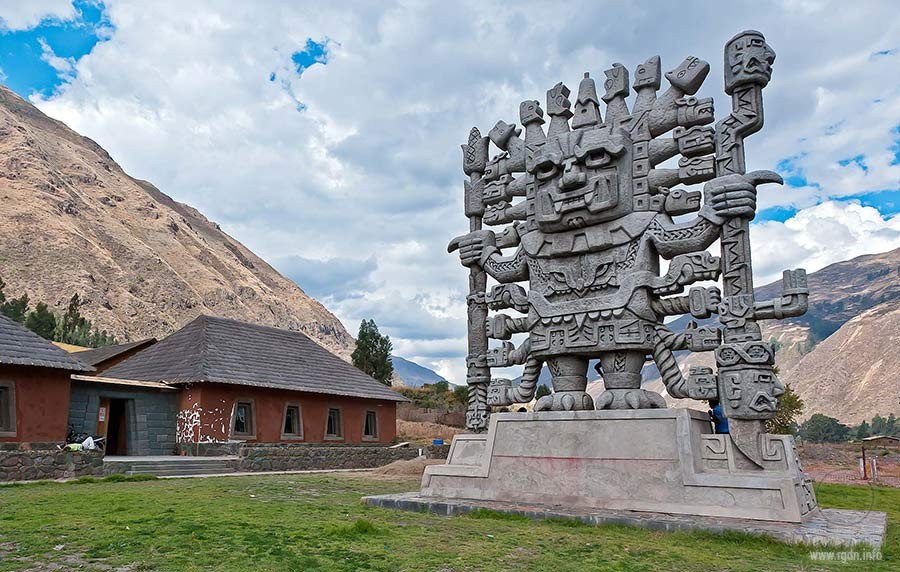
Viracocha deity of the South American Indians
PEOPLE OF THE SERPENT
"After spending so long immersed in the traditions of Viracocha, the bearded god of the distant Andes, I was intrigued to discover that Quetzalcoatl, the principal deity of the ancient Mexican pantheon, was described in terms that were extremely familiar.
For example, one pre-Colombian myth collected in Mexico by the sixteenth-century Spanish chronicler Juan de Torquemada asserted that Quetzalcoatl was “a fair and ruddy complexioned man with a long beard”. Another spoke of him as, “era Hombre blanco; a large man, broad browed, with huge eyes, long hair, and a great, rounded beard – la barba grande y redonda.” Another still described him as “a mysterious person ... a white man with strong formation of body, broad forehead, large eyes, and a flowing beard. He was dressed in a long, white robe reaching to his feet. He condemned sacrifices, except of fruits and flowers, and was known as the god of peace ... When addressed on the subject of war he is reported to have stopped up his ears with his fingers.”
According to a particularly striking Central American tradition, this “wise instructor... came from across the sea in a boat that moved by itself without paddles. He was a tall, bearded white man who taught people to use fire for cooking. He also built houses and showed couples that they could live together as husband and wife; and since people often quarrelled in those days, he taught them to live in peace.”
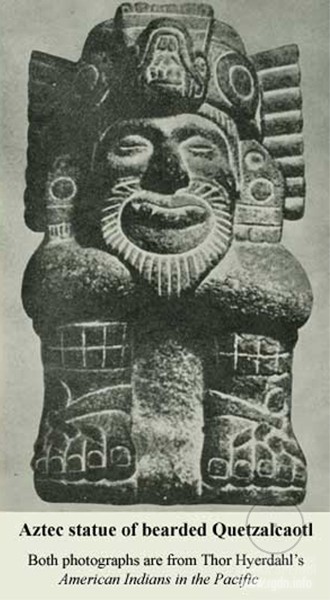
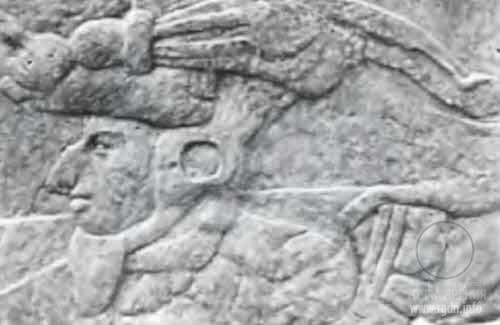
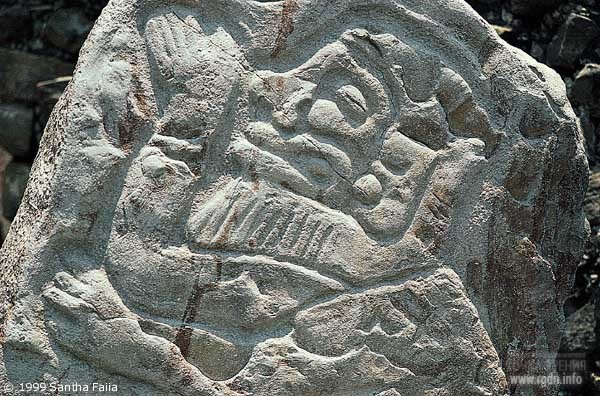
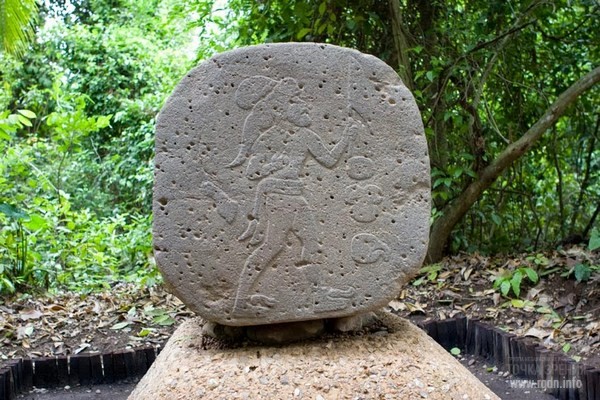
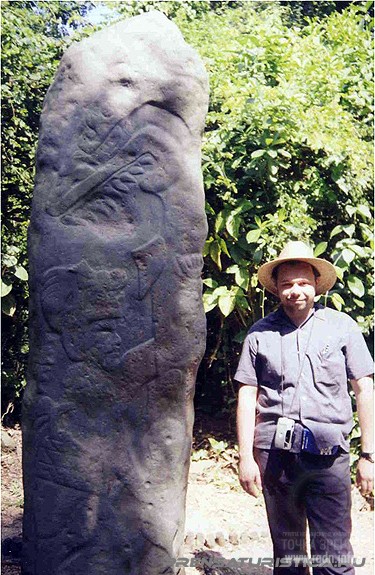
VIRACOCHA’S MEXICAN TWIN
“The reader will recall that Viracocha, in his journeys through the Andes, went by several different aliases. Quetzalcoatl did this too. In some parts of Central America (notably among the Quiche Maya) he was called Gucumatz. Elsewhere, at Chichen Itza for example, he was known as Kukulkan. When both these words were translated into English, they turned out to mean exactly the same thing: Plumed (or Feathered) Serpent. This, also, was the meaning of Quetzalcoatl.
There were other deities, among the Maya in particular, whose identities seemed to merge closely with those of Quetzalcoatl. One was Votan, a great civilizer, who was also described as pale-skinned, bearded and wearing a long robe. Scholars could offer no translation for his name but his principal symbol, like that of Quetzalcoatl, was a serpent. Another closely related figure was Itzamana, the Mayan god of healing, who was a robed and bearded individual; his symbol, too, was the rattlesnake.
What emerged from all this, as the leading authorities agreed, was that the Mexican legends collected and passed on by Spanish chroniclers at the time of the conquest were often the confused and conflated products of extremely long oral traditions. Behind them all, however, it seemed that there must lie some solid historical reality. In the judgement of Sylvanus Griswold Morley, the doyen of Maya studies:
“The great god Kukulkan, or Feathered Serpent, was the Mayan counterpart of the Aztec Quetzalcoatl, the Mexican god of light, learning and culture. In the Maya pantheon he was regarded as having been the great organizer, the founder of cities, the former of laws and the teacher of the calendar. Indeed his attributes and life history are so human that it is not improbable that he may have been an actual historical character, some great lawgiver and organizer, the memory of whose benefactions lingered long after death, and whose personality was eventually deified.”
All the legends stated unambiguously that Quetzalcoatl / Kukulkan / Gucumatz / Votan / Itzamana had arrived in Central America from somewhere very far away (across the “Eastern Sea”) and that amid great sadness he had eventually sailed off again in the direction whence he had come. The legends added that he had promised solemnly that he would return one day – a clear echo of Viracocha it would be almost perverse to ascribe to coincidence. In addition, it will be recalled that Viracocha’s departure across the waves of the Pacific Ocean had been portrayed in the Andean traditions as a miraculous event. Quetzalcoatl’s departure from Mexico also had a strange feel about it: he was said to have sailed away “on a raft of serpents”.
…Quetzalcoatl / Kukulkan / Itzamana was quite explicitly portrayed in many of the Mexican and Mayan accounts as having been accompanied by “attendants” or “assistants”…
Like some long-lost twin of Viracocha, the white and bearded Andean deity, Quetzalcoatl was depicted as having brought to Mexico all the skills and sciences necessary to create a civilized life, thus ushering in a golden age. He was believed, for example, to have introduced the knowledge of writing to Central America, to have invented the calendar, and to have been a master builder who taught the people the secrets of masonry and architecture. He was the father of mathematics, metallurgy, and astronomy and was said to have “measured the earth”. He also founded productive agriculture, and was reported to have discovered and introduced corn – literally the staff of life in these ancient lands. A great doctor and master of medicines, he was the patron of healers and diviners “and disclosed to the people the mysteries of the properties of plants”. In addition, he was revered as a lawgiver, as a protector of craftsmen, and as a patron of all the arts.
As might be expected of such a refined and cultured individual he forbade the grisly practice of human sacrifice during the period of his ascendancy in Mexico. After his departure the blood-spattered rituals were reintroduced with a vengeance. Nevertheless, even the Aztecs, the most vehement sacrificers ever to have existed in the long history of Central America, remembered “the time of Quetzalcoatl” with a kind of nostalgia. “He was a teacher,” recalled one legend, “who taught that no living thing was to be harmed and that sacrifices were to be made not of human beings but of birds and butterflies”.
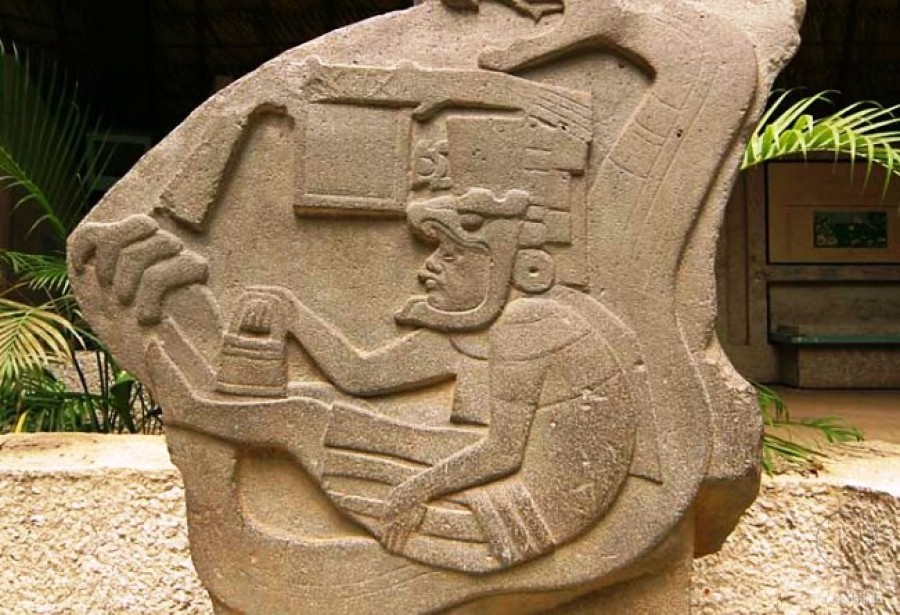
COSMIC STRUGGLE
“Why did Quetzalcoatl go away? What went wrong?
Mexican legends provided answers to these questions. They said that the enlightened and benevolent rule of the Plumed Serpent had been brought to an end by Tezcatlipoca, a malevolent god whose name meant “Smoking Mirror” and whose cult demanded human sacrifice. It seemed that a near-cosmic struggle between the forces of light and darkness had taken place in Ancient Mexico, and that the forces of darkness had triumphed...”
SERPENT SANCTUARY
“Santha and I had come to Tula/Tollan because it had been closely associated both with Quetzalcoatl and with his arch-enemy Tezcatlipoca, the Smoking Mirror. Ever-young, omnipotent, omnipresent and omniscient, Tezcatlipoca was associated in the legends with night, darkness and the sacred jaguar. He was “invisible and implacable, appearing to men sometimes as a flying shadow, sometimes as a dreadful monster”. Often depicted as a glaring skull, he was said to have been the owner of a mysterious object, the Smoking Mirror after which he was named, which he made use of to observe from afar the activities of men and gods. Scholars quite reasonably suppose that it must have been a primitive obsidian scrying stone: “Obsidian had an especial sanctity for the Mexicans, as it provided the sacrificial knives employed by the priests... Bernal Diaz [Spanish chronicler] states that they called this stone “Tezcat”. From it mirrors were also manufactured as divinatory media to be used by wizards.”
Representing the forces of darkness and rapacious evil, Tezcatlipoca was said in the legends to have been locked in a conflict with Quetzalcoatl that had continued over an immense span of years. At certain times one seemed to be gaining the upper hand, at certain times the other. Finally the cosmic struggle came to an end when good was vanquished by evil and Quetzalcoatl driven out from Tollan. Thereafter, under the influence of Tezcatlipoca’s nightmarish cult, human sacrifice was reintroduced throughout Central America.
As we have seen, Quetzalcoatl was believed to have fled to the coast and to have been carried away on a raft of serpents. One legend says, “He burned his houses, built of silver and shells, buried his treasure, and set sail on the EasternSea preceded by his attendants who had been changed into bright birds.”
This poignant moment of departure was supposedly staged at a place called Coatzecoalcos, meaning “Serpent Sanctuary”. There, before taking his leave, Quetzalcoatl promised his followers he would return one day to overthrow the cult of Tezcatlipoca and to inaugurate an era when the gods would again “accept sacrifices of flowers” and cease their clamour for human blood.”
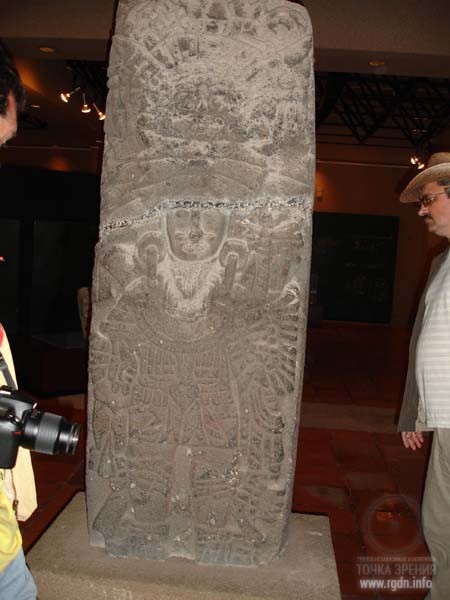
HYPOTHETICAL THIRD PARTY
“… The archaeological evidence suggested that rather than developing slowly and painfully, as is normal with human societies, the civilization of Ancient Egypt, like that of the Olmecs, emerged all at once and fully formed. Indeed, the period of transition from primitive to advanced society appears to have been so short that it makes no kind of historical sense. Technological skills that should have taken hundreds or even thousands of years to evolve were brought into use almost overnight – and with no apparent antecedents whatever.
... as Professor Emery writes:
“The impression we get is of an indirect connection, and perhaps the existence of a third party, whose influence spread to both the Euphrates and the Nile ... Modern scholars have tended to ignore the possibility of immigration to both regions from some hypothetical and as yet undiscovered area. [However] a third party whose cultural achievements were passed on independently to Egypt and Mesopotamia would best explain the common features and fundamental differences between the two civilizations.”
Among other things, this theory sheds light on the mysterious fact that the Egyptians and Sumerian people of Mesopotamia appear to have worshipped virtually identical lunar deities who were among the oldest in their respective pantheons (Thoth in the case of the Egyptians, Sin in the case of the Sumerians). According to the eminent Egyptologist Sir E.A. Wallis Budge, “The similarity between the two gods is too close to be accidental ... It would be wrong to say that the Egyptians borrowed from the Sumerians or the Sumerians from the Egyptians, but it may be submitted that the literati of both peoples borrowed their theological systems from some common but exceedingly ancient source.”
The question, therefore, is this: what was that “common but exceedingly ancient source”, that “hypothetical and as yet undiscovered area”, that advanced “third party” to which both Budge and Emery refer? And if it left a legacy of high culture in Egypt and in Mesopotamia, why shouldn’t it have done so in Central America?
It’s not good enough to argue that civilization “took off” much later in Mexico than it had in the Middle East. It is possible that the initial impulse could have been felt at the same time in both places but that the subsequent outcome could have been completely different.
On this scenario, the civilizers would have succeeded brilliantly in Egypt and in Sumer, creating lasting and remarkable cultures there. In Mexico, on the other hand (as also seems to have been the case in Peru), they suffered some serious setback – perhaps getting off to a good start, when the gigantic stone heads and reliefs of bearded men were made, but going rapidly downhill. The light of civilization would never quite have been lost, but perhaps things didn’t pick up again until around 1500 BC, the so-called “Olmec horizon”. By then the great sculptures would have been hoary with age, ancient relics of immense spiritual power, their all-but-forgotten origins wrapped in myths of giants and bearded civilizers.”
ADVENTURES IN THE UNDERWORLD, JOURNEYS TO THE STARS
“The “hypothetical third party” theory explains the similarities and fundamental differences between Ancient Egypt and Ancient Mesopotamia by proposing that both received a common legacy of civilization from the same remote ancestor. No serious suggestions have been made as to where that ancestral civilization might have been located, its nature, or when it flourished. Like a black hole in space, it cannot be seen. Yet its presence can be deduced from its effects on things that can be seen – in this case the civilizations of Sumer and Egypt.
It is possible that the same mysterious ancestor, the same invisible source of influence, could also have left its mark in Mexico?...”
PACAL’S TOMB
“… Pacal’s tomb was at least a thousand years younger than any of the La Venta treasures. Nevertheless, a tiny jade statuette was found lying close to the skeleton inside the sarcophagus, and it appeared to be much older than the other grave-goods also placed there. It depicted an elderly Caucasian, dressed in long robes, with a goatee beard.”
SOUTH AMERICA
“Moving to South America, we encounter the Chibcas of central Colombia. According to their myths, they had originally lived as savages, without laws, agriculture or religion. Then one day there appeared among them an old man of a different race. He wore a thick long beard and his name was Bochica. He taught the Chibcas how to build huts and live together in society…”
A TOKEN OF GOOD FAITH
“Isn’t it also odd that so many of the myths turn out to contain descriptions of figures like Quetzalcoatl and Viracocha, said to have come in the time of darkness, after the flood, to teach architecture, astronomy, science and the rule of law to the scattered and devastated tribes of survivors?
Who were these civilizing heroes? Were they figments of the primitive imagination? Or gods? Or men? If they were men, could they have tampered with the myths in some way, turning them into vehicles for transporting knowledge through time? ...”
SPEAKING TO THE UNBORN
“… White and bearded, Osiris is the Egyptian manifestation of this universal figure, and it may not be an accident that one of the first acts he is remembered for in myth is the abolition of cannibalism among the primitive inhabitants of the NileValley. Viracocha, in South America, was said to have begun his civilizing mission immediately after a great flood; Quetzalcoatl, the discoverer of maize, brought the benefits of crops, mathematics, astronomy and a refined culture to Mexico after the Fourth Sun had been overwhelmed by a destroying deluge.
… Osiris was in many respects the Egyptian counterpart of Viracocha and Quetzalcoatl, the civilizing deities of the Andes and of Central America. With them he shared not only a common mission but a vast heritage of common symbolism…”
OSIRIS AND THE LORDS OF ETERNITY
“Occasionally referred to in the texts as a neb tem, or “universal master”, Osiris is depicted as human but also superhuman, suffering but at the same time commanding. Moreover, he expresses his essential dualism by ruling in heaven (as the constellation of Orion) and on earth as a king among men. Like Viracocha in the Andes and Quetzalcoatl in Central America, his ways are subtle and mysterious. Like them, he is exceptionally tall and always depicted wearing the curved beard of divinity. And like them too, although he has supernatural powers at his disposal, he avoids the use of force wherever possible.
… Quetzalcoatl, the god-king of the Mexicans, was believed to have departed from Central America by sea, sailing away on a raft of serpents. It is therefore hard to avoid a sense of déjà vu when we read in the Egyptian Book of the Dead that the abode of Osiris also “rested on water” and had walls made of “living serpents”. At the very least, the convergence of symbolism linking these two gods and two far-flung regions is striking.
There are other obvious parallels as well.
The central details of the story of Osiris have been recounted in earlier chapters and we need not go over them again. The reader will not have forgotten that this god – once again like Quetzalcoatl and Viracocha – was remembered principally as a benefactor of mankind, as a bringer of enlightenment and as a great civilizing leader. He was credited, for example, with having abolished cannibalism and was said to have introduced the Egyptians to agriculture – in particular to the cultivation of wheat and barley – and to have taught them the art of fashioning agricultural implements. Since he had an especial liking for fine wines (the myths do not say where he acquired this taste), he made a point of “teaching mankind the culture of the vine, as well as the way to harvest the grape and to store the wine...” In addition to the gifts of good living he brought to his subjects, Osiris helped to wean them “from their miserable and barbarous manner” by providing them with a code of laws and inaugurating the cult of the gods in Egypt.
When he had set everything in order, he handed over the control of the kingdom to Isis, quit Egypt for many years, and roamed about the world with the sole intention, Diodorus Siculus was told, “of visiting all the inhabited earth and teaching the race of men how to cultivate the vine and sow wheat and barley; for he supposed that if he made men give up their savagery and adopt a gentle manner of life he would receive immortal honours because of the magnitude of his benefactions...”
Osiris travelled first to Ethiopia, where he taught tillage and husbandry to the primitive hunter-gatherers he encountered. He also undertook a number of large-scale engineering and hydraulics works: “He built canals, with flood gates and regulators ... he raised the river banks and took precautions to prevent the Nile from overflowing...” Later he made his way to Arabia and thence to India, where he established many cities. Moving to the Thrace he killed a barbarian king for refusing to adopt his system of government. This was out of character; in general. Osiris was remembered by the Egyptians for having “forced no man to carry out his instructions, but by means of gentle persuasion and an appeal to their reason he succeeded in inducing them to practise what he preached. Many of his wise counsels were imparted to his listeners in hymns and songs, which were sung to the accompaniment of instruments of music.”
Once again the parallels with Quetzalcoatl and Viracocha are hard to avoid. During a time of darkness and chaos – quite possibly linked to a flood – a bearded god, or man, materializes in Egypt (or Bolivia, or Mexico). He is equipped with a wealth of practical and scientific skills, of the kind associated with mature and highly developed civilizations, which he uses unselfishly for the benefit of humanity. He is instinctively gentle but capable of great firmness when necessary. He is motivated by a strong sense of purpose and, after establishing his headquarters at Heliopolis (or Tiahuanaco, or Teotihuacan), he sets forth with a select band of companions to impose order and to reinstate the lost balance of the world.
Leaving aside for the present the issue of whether we are dealing here with gods or men, with figments of the primitive imagination or with flesh-and-blood beings, the fact remains that the myths always speak of a company of civilizers: Viracocha has his “companions”, as have both Quetzalcoatl and Osiris. Sometimes there are fierce internal conflicts within these groups, and perhaps struggles for power: the battles between Seth and Horus, and between Tezcatlipoca and Quetzalcoatl are obvious examples. Moreover, whether the mythical events unfold in Central America, or in the Andes, or in Egypt, the upshot is also always pretty much the same: the civilizer is eventually plotted against and either driven out or killed.
The myths say that Quetzalcoatl and Viracocha never came back (although, as we have seen, their return to the Americas was expected at the time of the Spanish conquest). Osiris, on the other hand, did come back. Although he was murdered by Set soon after the completion of his worldwide mission to make men “give up their savagery”, he won eternal life through his resurrection in the constellation of Orion as the all-powerful god of the dead. Thereafter, judging souls and providing an immortal example of responsible and benevolent kingship, he dominated the religion (and the culture) of Ancient Egypt for the entire span of its known history.”
***
Etcetera, etcetera… Read more in the aforesaid book by G. Hancock.
The article is permanently updated...
To be continued.
Prepared by Dato Gomarteli (Ukraine-Georgia)
 In quest of... Quetzalcoatl, Kukulkan, the Feathered Serpent... Part One
votes:
204
In quest of... Quetzalcoatl, Kukulkan, the Feathered Serpent... Part One
votes:
204
|

Project Aim










Leave comment